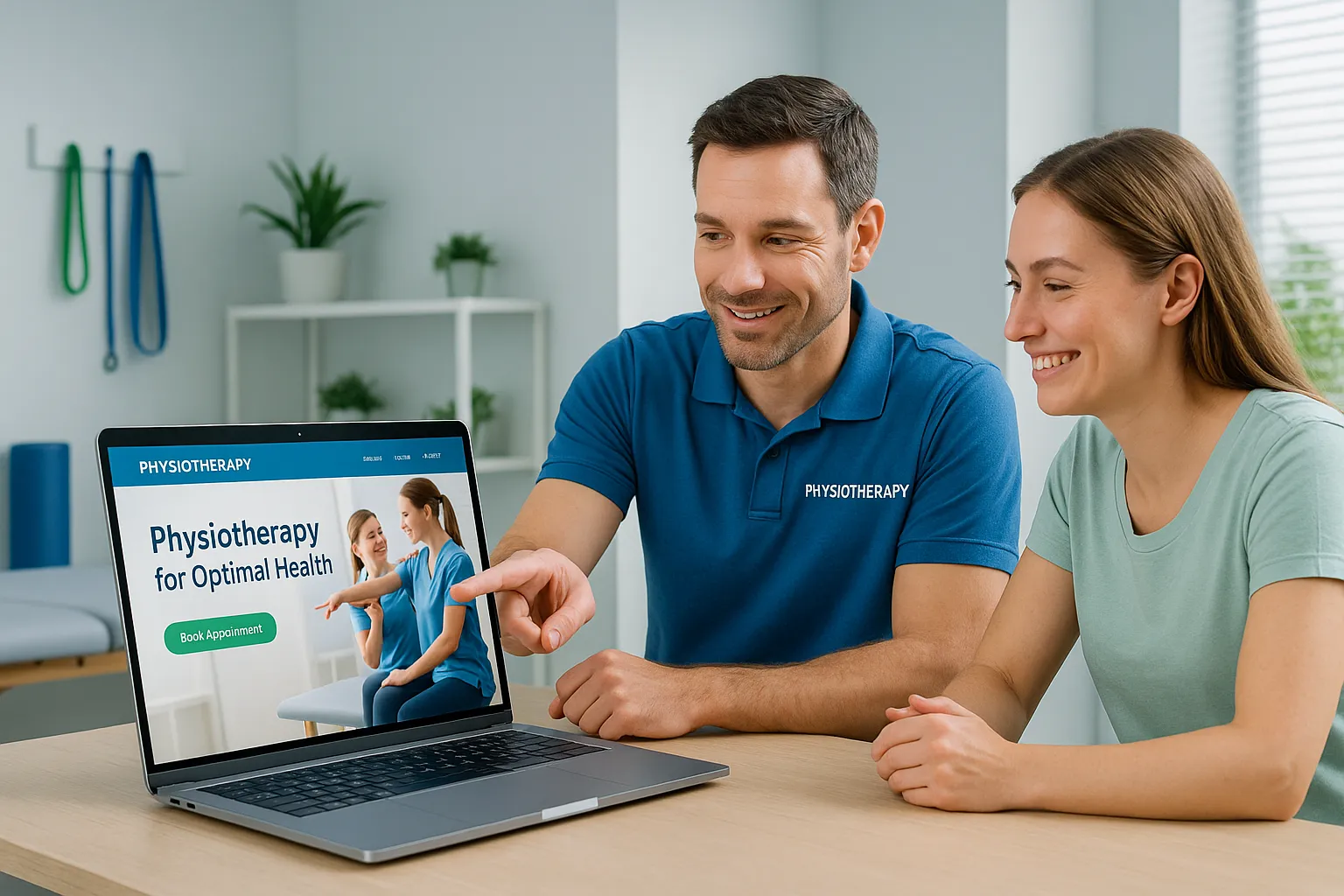
Rated Excellent by the Customers ★ ★ ★ ★ ★

Mobile-First Healthcare: Why Your Physiotherapy Clinic Can’t Wait Until 2026
- April 25, 2025
In today’s rapidly evolving healthcare landscape, providing exceptional patient care extends far beyond your clinic walls. The healthcare landscape is evolving at a rapid pace, driven by technological advancements, changing patient expectations, and global health challenges. Healthcare providers must adapt their strategies to stay relevant, attract patients, and provide value in an increasingly digital world.
The Digital Transformation of Healthcare
In 2025, healthcare providers are facing a rapidly changing digital landscape. Patients increasingly turn to the web for healthcare information, appointment bookings, and even virtual consultations. Healthcare practices, from private to small-scale health businesses, need to ensure that their websites provide essential information and offer a seamless, secure, and user-friendly experience.

Why Mobile Optimization is Critical Now
In 2025, your healthcare website must be mobile-friendly. With more and more patients using smartphones to search for healthcare services, your website must provide an optimal experience on all devices. More than 60% of internet searches are conducted on mobile devices, and that number is expected to increase in the coming years. Having a mobile-friendly website ensures that your practice stays accessible to patients no matter where they are or what device they’re using.
Key Components of Mobile-First Healthcare
1. Responsive Design Implementation
Essential features include:
• Responsive Design: Ensuring your website automatically adjusts its layout to fit any screen size
• Fast Loading Speed: Optimizing images and content for quick mobile loading
• Mobile-Friendly Forms: Simplifying online forms for easy mobile completion
2. Patient Portal Integration
Modern healthcare websites need robust patient portals that allow individuals to:
• Schedule appointments without phone calls
• Access medical records seamlessly
• View lab results and treatment plans
• Communicate securely with providers
3. Security and Compliance
Security is paramount when it comes to healthcare websites. Essential security features include:
• SSL encryption
• Two-factor authentication (2FA) for staff access
• HIPAA-compliant data storage
• Regular software updates and firewalls to protect against cyber threats.
The Impact on Patient Experience
Wearable devices and mobile health apps are revolutionizing physiotherapy. These technologies monitor physical activity and vital signs, allowing physiotherapists to offer personalized treatment plans and track progress accurately.4
Improved Patient Engagement
Modern mobile solutions provide:
• 24/7 support through AI-powered chatbots
• Virtual assistants for patient guidance
• Exercise reminders
• Remote pain level monitoring
Implementation Strategy
Short-Term Goals (30-60 Days)
- Implement online appointment booking systems
- Set up secure patient communication channels
- Optimize existing content for mobile devices
An online appointment booking system is essential for improving patient convenience and operational efficiency. This feature allows patients to schedule their appointments at their convenience without needing to call, which streamlines the booking process and reduces administrative workload.

Long-Term Goals (90-180 Days)
Focus on: • Integrating cutting-edge technologies like AI, VR, and wearable sensors • Developing personalized care systems • Implementing proactive health monitoring • Creating interactive patient education platforms
This future is not just about fancy gadgets; it’s about empowering individuals to take control of their health and well-being. Imagine a world where physiotherapy is not just reactive, but proactive, preventing injuries before they happen. Treatment plans will be tailored to your unique body and needs, delivered through interactive games and real-time feedback mechanisms.4
Conclusion
Success in this new era demands more than just adopting new technologies—it requires a fundamental shift in how we approach patient engagement and community health education. By embracing these innovative strategies, you’re not just promoting your services; you’re positioning your organization as a trusted healthcare partner in an increasingly complex and connected world.

This ebook refects the common mistakes made by physiotherapists and also provides solution on how to fix them.
Download this free ebook
Top 10 Website Mistakes Physiotherapists Make & How to Fix Them
DownloadInitial results appear within 30-60 days, with significant revenue increases typically seen within 3-6 months of implementing a comprehensive strategy.
Effective local SEO programs typically start at $500-$1,500 monthly, with most clinics seeing positive ROI within 2-3 months.
Clinics typically see 10-20 additional new patients monthly after implementing proper local SEO strategies.
Neglecting Google Business Profile optimization and consistent NAP information across platforms are the most common and costly mistakes.
Local SEO typically delivers 3-5x better ROI than traditional advertising, with more sustainable long-term results and lower patient acquisition costs.
The most engaging content for physiotherapy websites includes condition-specific treatment guides (e.g., “Complete Recovery Guide for Rotator Cuff Injuries”), before-and-after patient success stories with measurable outcomes, preventative exercise videos, specialized service explanations targeting specific demographics (like runners or seniors), and educational content about innovative treatment techniques. Research shows that websites with regularly updated, helpful content receive 55% more traffic and generate 67% more leads than static websites.
Patient testimonials build trust and credibility for your practice. They provide social proof of your effectiveness and help potential patients feel more comfortable choosing your services. Consider featuring video testimonials for a more personal touch.
You can use analytics tools like Google Analytics to track visitor behavior, page views, and conversion rates. Setting up goals for appointment bookings can give you insights into how well your website is performing in terms of patient engagement.

Website and Digital Marketing Solutions for Physiotherapists and Cancer Rehabilitation Physiotherapists
Contact Us
- info@physiowebcare.com
- I work from beaches and hills!
- Skype me for a call
Get Connected








